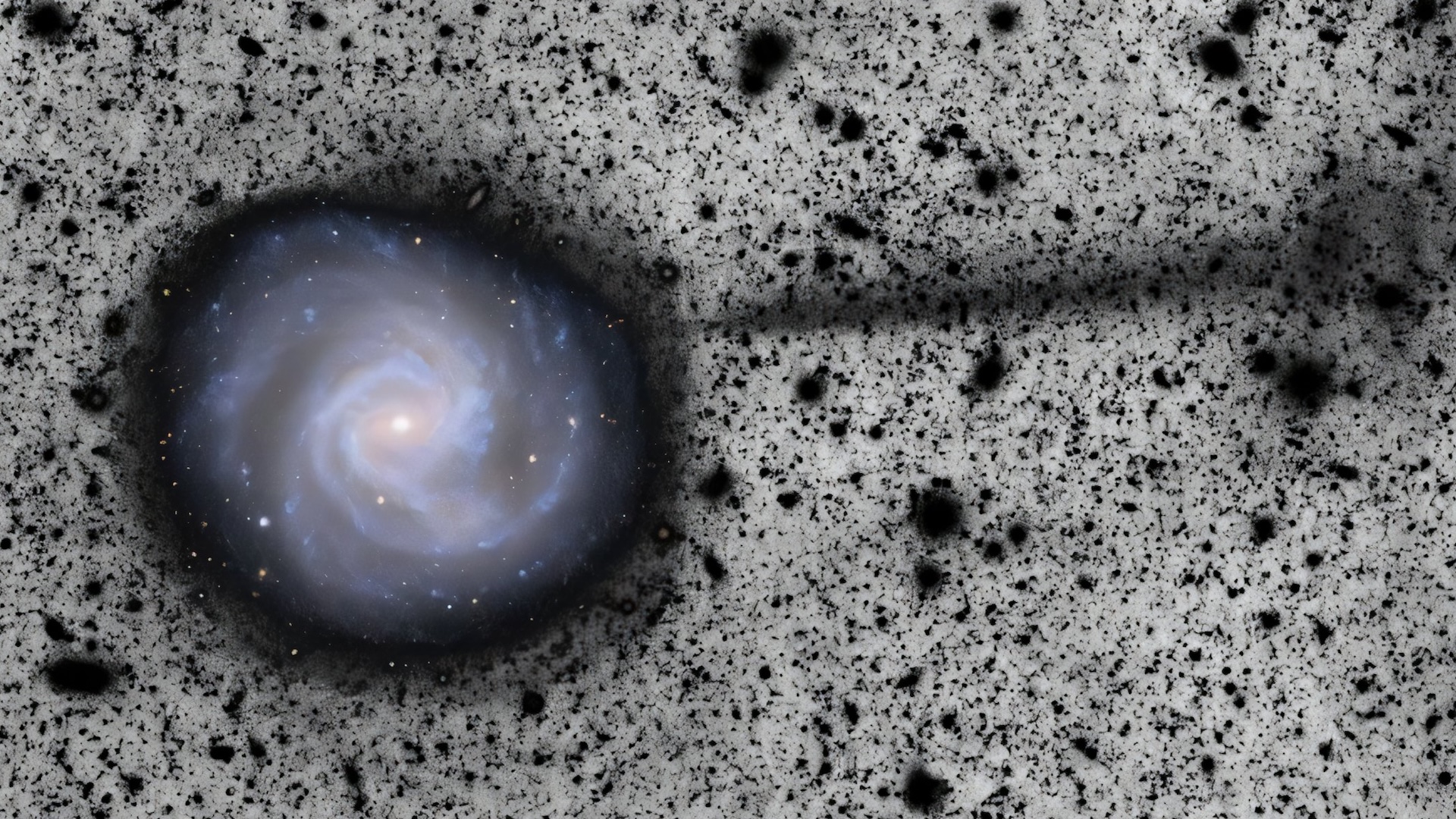How far can the human eye see?
The human eye can see far beyond Earth's horizon.
Earth's surface curves out of sight at a distance of 3.1 miles (5 kilometers). But our visual acuity extends far beyond the horizon. If Earth were flat, or if you were standing atop a mountain surveying a larger-than-usual patch of the planet, you could perceive bright lights hundreds of miles distant. On a dark night, you could even see a candle flame flickering up to 30 miles (48 km) away.
How far the human eye can see depends on how many particles of light, or photons, a distant object emits. The farthest object visible with the naked eye is the Andromeda galaxy, located an astonishing 2.6 million light-years from Earth. The galaxy's 1 trillion stars collectively emit enough light for a few thousand photons to hit each square centimeter of Earth every second; on a dark night, that's plenty to excite our retinas.
Related: How do our eyes move in perfect synchrony?
Back in 1941, the vision scientist Selig Hecht and his colleagues at Columbia University made what is still considered a reliable measurement of the "absolute threshold" of vision — the minimum number of photons that must strike our retinas in order to elicit an awareness of visual perception. The experiment probed the threshold under ideal conditions: study participants' eyes were given time to adapt to total darkness, the flash of light acting as a stimulus had a (blue-green) wavelength of 510 nanometers, to which our eyes are most sensitive, and this light was aimed at the periphery of the retina, which is richest in light-detecting rod cells.
The scientists found that for study participants to perceive such a flash of light more than half the time, the subjects required between 54 and 148 photons to hit their eyeballs. Based on measurements of retinal absorption, the scientists calculated that a factor of 10 fewer photons were actually being absorbed by the participant's rod cells. Thus, the absorption of 5 to 14 photons, or, equivalently, the activation of just 5 to 14 rod cells, tells your brain you're seeing something.
"This is indeed a small number of chemical events," Hecht and his colleagues concluded in their seminal paper on the subject.
Considering the absolute threshold, the brightness of a candle flame, and the way a glowing object dims according to the square of the distance away from it, vision scientists conclude that one could make out the faint glimmer of a candle flame up to 30 miles away.
Get the world’s most fascinating discoveries delivered straight to your inbox.
But how far away can we perceive that an object is more than just a twinkle of light? For something to appear spatially extended rather than point-like, light from it must stimulate at least two adjacent cone cells — the elements in our eyes that produce color vision. Under ideal conditions, an object must subtend an angle of at least 1 arcminute, or one sixtieth of a degree, in order to excite adjacent cones. (This angular measure stays the same regardless of whether an object is nearby or far away; distant objects must be much larger to subtend the same angle as near objects). The full moon is 30 arcminutes across, whereas Venus is barely resolvable as an extended object at around 1 arcminute across.
Human-scale objects are resolvable as extended objects from a distance of just under 2 miles (3 km). For example, at that distance, we would just be able to make out two distinct headlights on a car.
Originally published on Live Science.
Natalie Wolchover was a staff writer for Live Science from 2010 to 2012 and is currently a senior physics writer and editor for Quanta Magazine. She holds a bachelor's degree in physics from Tufts University and has studied physics at the University of California, Berkeley. Along with the staff of Quanta, Wolchover won the 2022 Pulitzer Prize for explanatory writing for her work on the building of the James Webb Space Telescope. Her work has also appeared in the The Best American Science and Nature Writing and The Best Writing on Mathematics, Nature, The New Yorker and Popular Science. She was the 2016 winner of the Evert Clark/Seth Payne Award, an annual prize for young science journalists, as well as the winner of the 2017 Science Communication Award for the American Institute of Physics.


